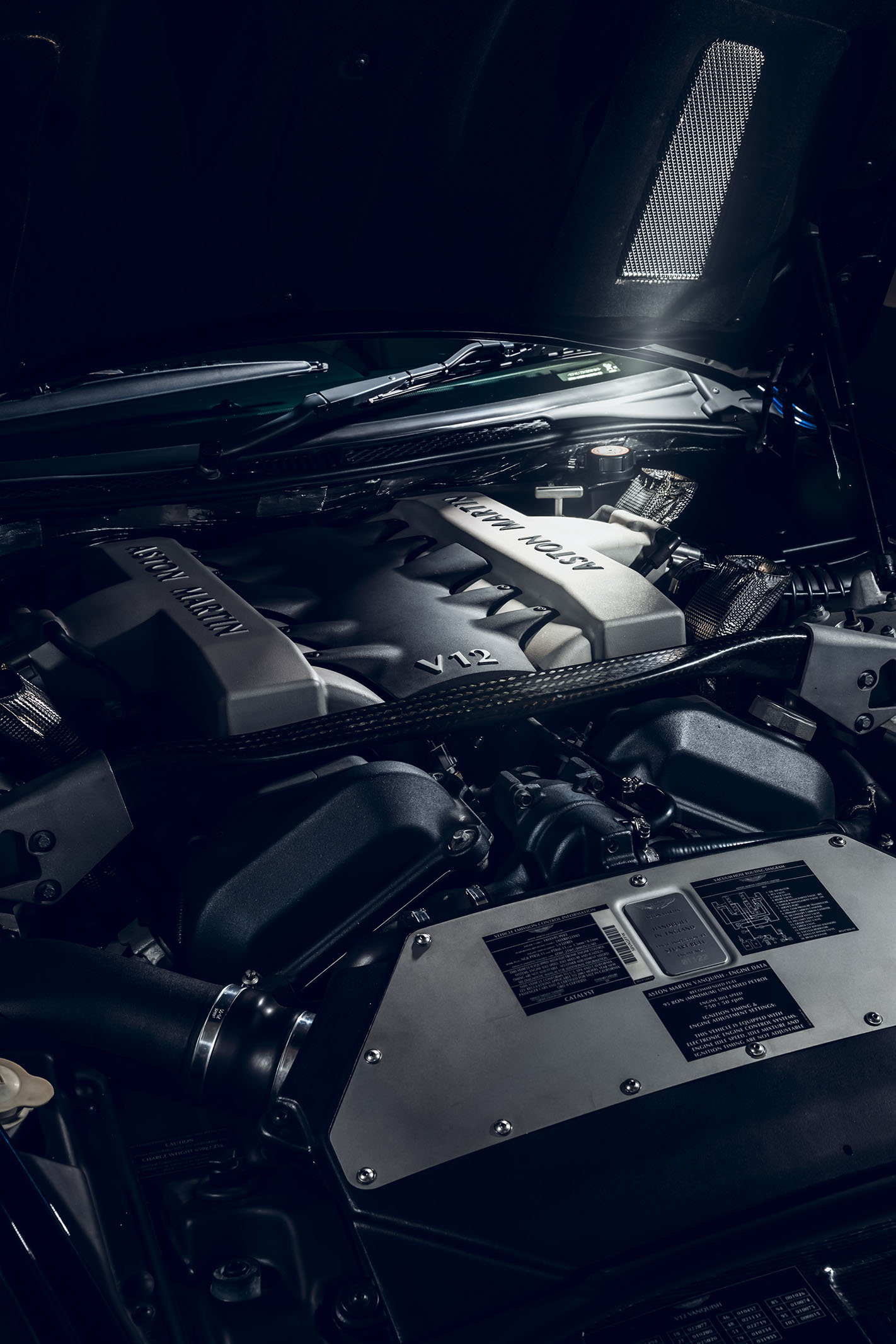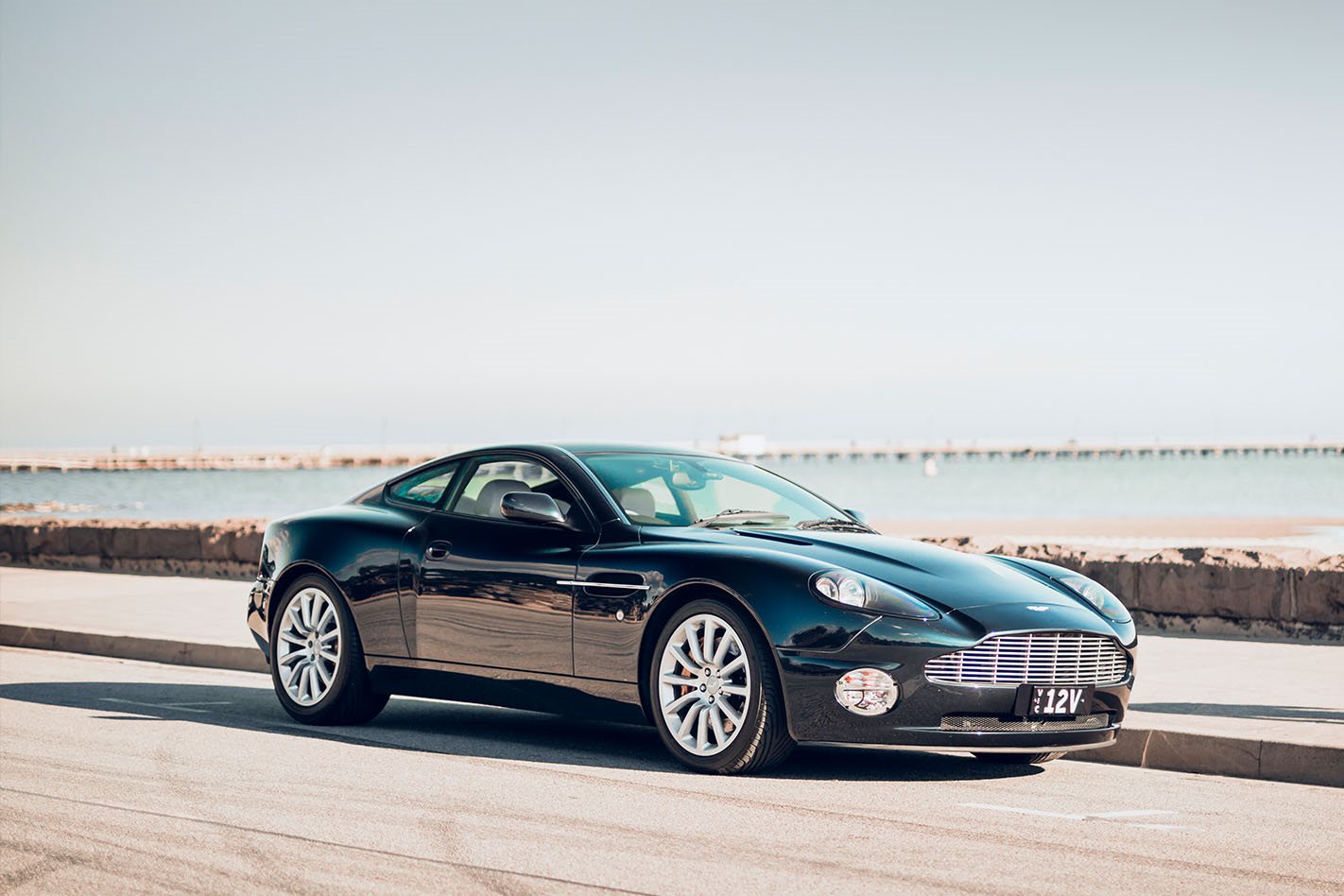Of course, it was the DB7 that changed everything. We all know that. It was the car that reimagined Aston Martin’s design language, ‘the most beautiful car in the world’ hauling the company out of its 1970s mindset with some verve. What came next was arguably a bigger step for the business, though.
The underpinnings of the 1994 DB7 could still trace a bloodline to the Jaguar XJS, and was in fact a modified version of the car that TWR designed to replace the XJS, dubbed Project XX. This was canned due to federalisation issues – with Jaguar baulking at designer Ian Callum’s bill – so Project XX went back under cover at Bloxham only to re-emerge as the Callum-refreshed DB7. This was a project Aston has acquired on the cheap (the development budget was around £30m) but in relying on borrowed steel it wasn’t a viable long-term strategy. Aston’s heritage wasn’t forged in steel. It sculpted its art in element 13 – aluminium.
The plan to develop the V12 Vanquish relied on a new construction method for the company that utilised a bonded aluminium superstructure with a carbonfibre transmission tunnel and braided carbonfibre A-pillars, all draped in signature aluminium bodywork. Lotus had a hand in the genesis of the Vanquish project. In fact, the ‘Project Vantage Concept’ that would develop into the production Vanquish had a number of big names behind it. Bob Dover, Aston’s chairman and chief executive, assembled a stellar cast. Dan Parry-Williams, who went on to become McLaren’s engineering and design director, was seconded to the suspension project by Tom Walkinshaw. Lotus also worked on the chassis and suspension. Ian Callum, then still a TWR employee, penned the lines, drawing inspiration from the DB4 Zagato. On January 5, 1998, it was unveiled at the Detroit Show to a rapturous reception.
Knowing what we know now, the concept looks odd, almost as if a Vanquish has been shrunken in a hot wash. The muscular haunches and distinctive front end are easily recognisable but the rear lights were said to have been purloined from the Ford Cougar and the air vents in the dash are from a Ford Ka. The latter parts were to create a delay in launching the production Vanquish after Dover’s successor, Dr Ulrich Bez, appointed to the CEO position in July 2000, took a vehement dislike to them and insisted they be replaced with classier Volvo-sourced vents.
They were just one of a number of ingredients in the concept that never made production. The pushrod suspension with horizontally mounted front spring/dampers which fed loads into the bulkhead, Rover P6-style, were dropped. As was the double-skinned carbonfibre and aluminium honeycomb roof, which was switched out for sheet aluminium. Callum was heartbroken over an alteration to the side of the car for production, where the flanks had to be altered to fit the over-large Ford parts catalogue key barrel carried over from the DB7.
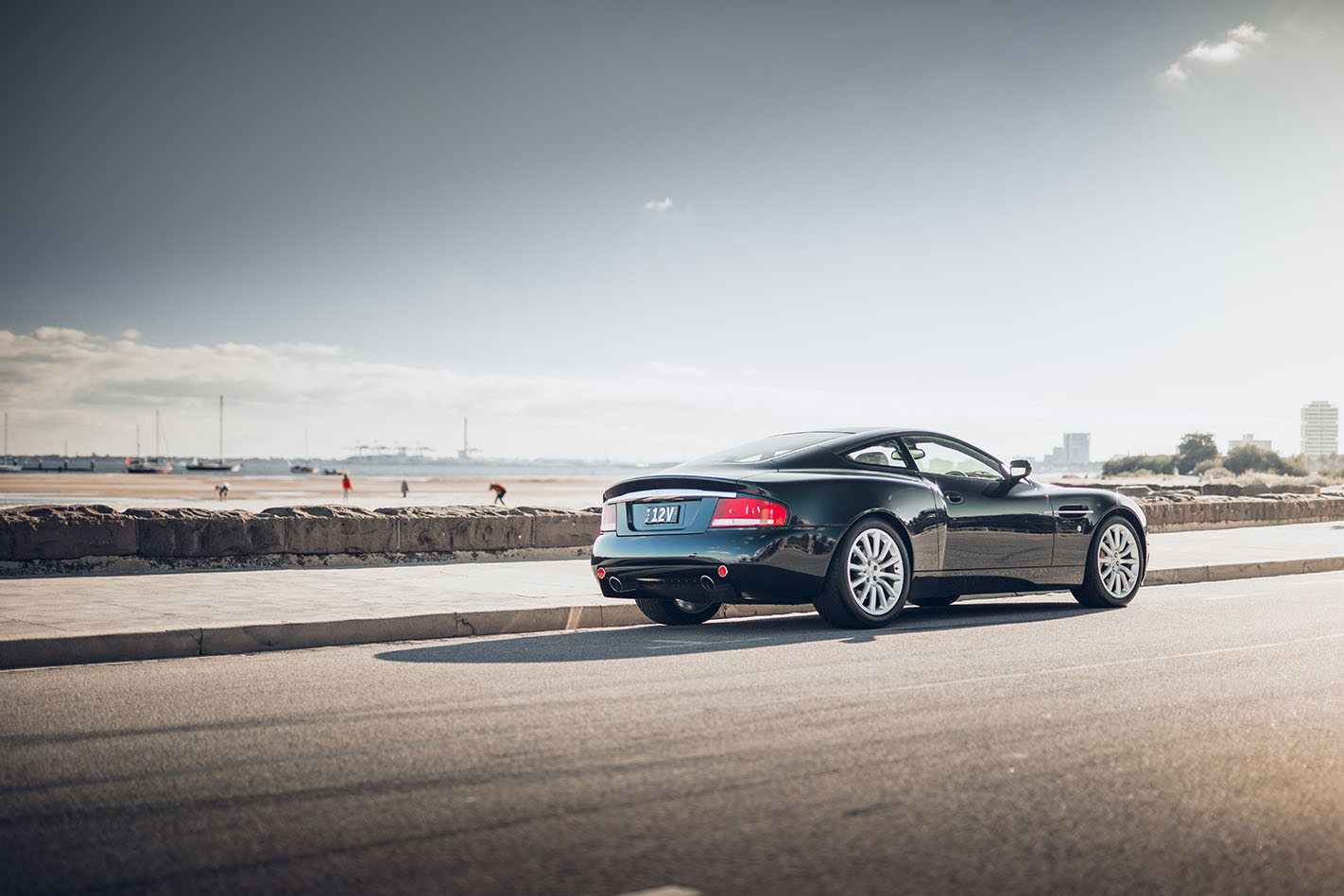
Nevertheless, the basic silhouette survived, with some tweaks to a rear end that Ford boss Jac Nasser described as “too American-like, too Camaro-like”. Callum is especially proud of the proportions of the front end. Because the engine is actually set very far rearwards, its centre of mass is behind the front axle line. This required the windscreen to reach forward over the top of the engine block, creating a structural challenge to cantilever or hang the windscreen out there, but the problems were solved and the Vanquish got the windscreen rake it deserved.
Although some point to the Vanquish as the genesis of Aston’s VH aluminium platform, in truth it was pre-VH, with some elements of its construction going into the first VH model ‘proper’, the 2004 DB9. The car was largely built with known technologies, with even the chassis extrusions easily built. Less straightforward were the body panels. These utilised a new superforming process to shape them rather than using the traditional English Wheel, but because the design was frozen early in the process, the development team had a chance to get them right.
The Vanquish’s V12 powerplant owed much to Ford’s 1996 Indigo Concept, which used the pistons, rings, rods and valvetrain from a pair of Duratec V6 engines and which first surfaced in the DB7 Vantage of 1999. The production Vanquish was finally shown to the press and potential customers in October 2000 and then the public at the Geneva Show in March 2001. Production started very soon afterwards at the Newport Pagnell plant that had been refreshed by Ian Minards aimed at increasing production rates from 1.5 to eight cars a week. Deliveries to customers commenced in the summer of 2001.
Aston Martin refers to this car as the V12 Vanquish, while the VH310 model, built from 2012 is known simply as the Vanquish. To avoid clumsy repetition throughout, we’ll just stick with Vanquish for the original model.
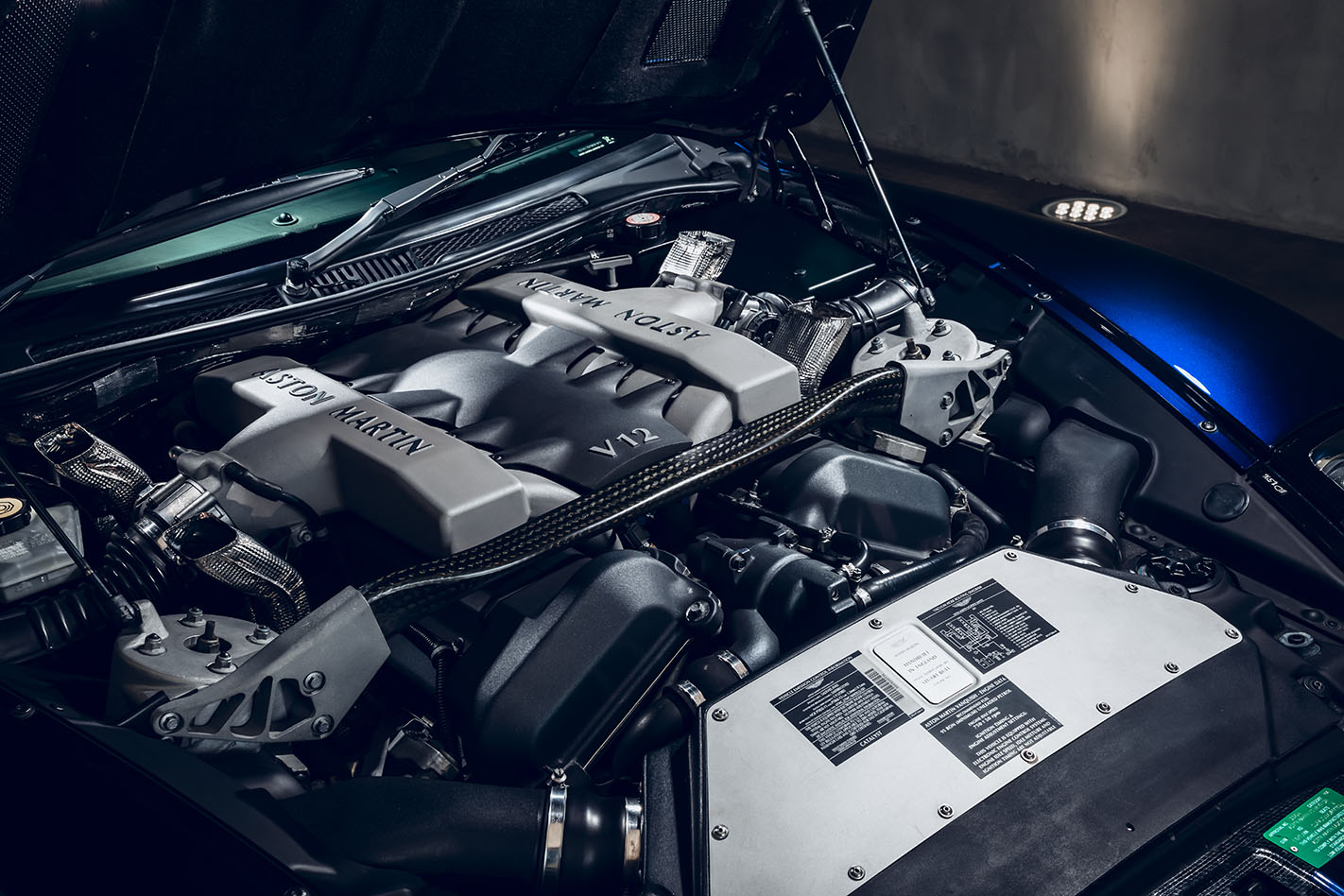
Wheels sent Peter Robinson to the Scottish borders to drive an early test car for the September 2001 issue. Robbo was convinced the Vanquish could stand comparison with Ferrari’s 550 Maranello. Driving it in on the fast Borders roads near Callum’s Dumfries home, our scribe was minded of another local. “Jim Clark, I know, would approve,” he said. “If he’d lived, the Vanquish is just the kind of car I imagine a now 65-year old Clark would own. Super quick, understated, relaxed, comfortable, beautifully finished and a pleasure to drive and admire.”
It seems Robbo was just as taken with the car as its designer. Callum later said, “It captured all of the exotic and all of the emotion I could put into the car, and it was new. You know I remembered thinking at the time it was finished, ‘If I never do a car again, at least I’ve done this one.’ That was quite satisfying.” Not that it was perfect. Callum was never happy with the carry-over headlights from the DB7, claiming the concept had much neater, smaller light pods that he should have fought more tenaciously to retain. He also regretted Aston Martin’s decision to launch the car without the option of a manual gearbox.
Robinson also had some reservations. He noted that the shift times of the Magneti-Marelli sourced transmission were, even in the box’s sharpest mode, more than three times slower than the E46 BMW M3’s SMG transmission. He also questioned the weight, which had ballooned from the concept’s 1500kg target to a monster 1835 kegs. Then there was the packaging, which is tightish for tall drivers with thick A-pillars. There were few complaints about the chassis dynamics, though.
Buying a Vanquish today isn’t the most straightforward of exercises. For a start, they’re rare.
Aston Martin built 2575 between 2001 and 2007, so despite Ian Minards’ best efforts, that’s roughly two per day. That’s split between the V12 Vanquish with 1489 sales and the 388kW Vanquish S, introduced in 2004, which registered 1086 units. The last 50 Vanquish models off the Newport Pagnell line were all Vanquish S Ultimate Edition cars. Early, tired examples of UK-market Vanquishes can be found for around $90,000, but these are best avoided. As with many hand-built cars, buying cheap is a false economy and a genuine, well looked-after local car will cost from $150,000. There’s little difference in values between the factory two-seaters and the 2+2s. Given that Aston Martin only exported a few cars to Australia in an official capacity and that Vanquishes don’t change hands all that often, it pays to play the long game when buying.
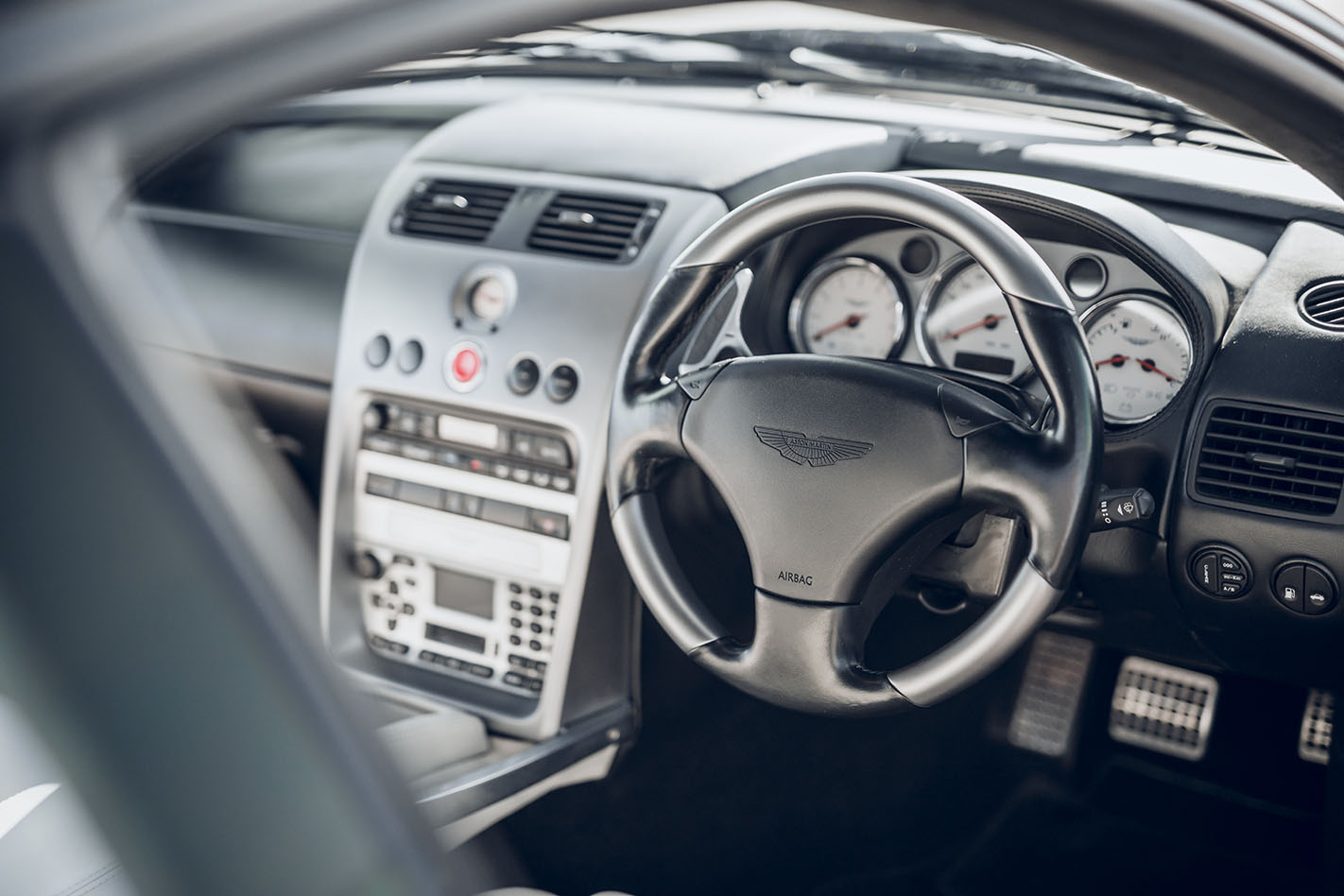
The Vanquish is a complex car and many of its innards are densely packed. It has an exhaust and intake architecture like no Aston before or since and the gearbox hydraulics, with its warren of inaccessible reservoirs and pumps, isn’t something that the layman will want to crack into, and access requires dismantling the whole rear section of the car.
Collector cars that sit at the back of garages will suffer when fuel goes bad, and this can require removal and refurbishment of the injectors. The engines are otherwise mechanically tough, although unsympathetic driving can very rapidly fry the clutch pack in the robotised manual gearbox. The later Works manual retrofit cures this issue but the shift action is poor, clutch calibration odd and the gear lever is in a weird spot. Perhaps the best solution is to stick with the original ‘box but upgrade it to later Vanquish S specification by using that model’s microswitch position sensors, which – along with a measured right boot – cures most of the car’s low-speed friction-plate histrionics. Owners can operate a reset mode for the software that learns individual driver styles. Effectively you hold both paddles in a sequence with your foot on the brake and the system then takes 30 seconds to relearn the gearshift’s relation with the clutch bite point.
Leather lines much of the cabin, so check that the sun hasn’t shrunk the hide, warping the edges of the dash-top or door cards. The dash on early cars looks a little dated with its Jaguar-sourced switchgear and broad A-pillars, but post-2006 Vanquish S models received the DB9-style console with 6.5-inch colour sat-nav screen. Common trim parts and consumables are invariably cheaper sourced through Jaguar than Aston.
The V12 Vanquish transformed our perception of Aston Martin, modernising it without compromising its heritage one jot.
It’s now seen as one of the stars in the company’s firmament. Sadly, its successor, the Gaydon-built DBS (2008-2012) probably won’t be remembered as one of the company’s greats. The Vanquish, on the other hand, has the lot. It’s charismatic, marked a technological step-change and represents a pivotal part of Aston Martin’s story. It’s the real deal.
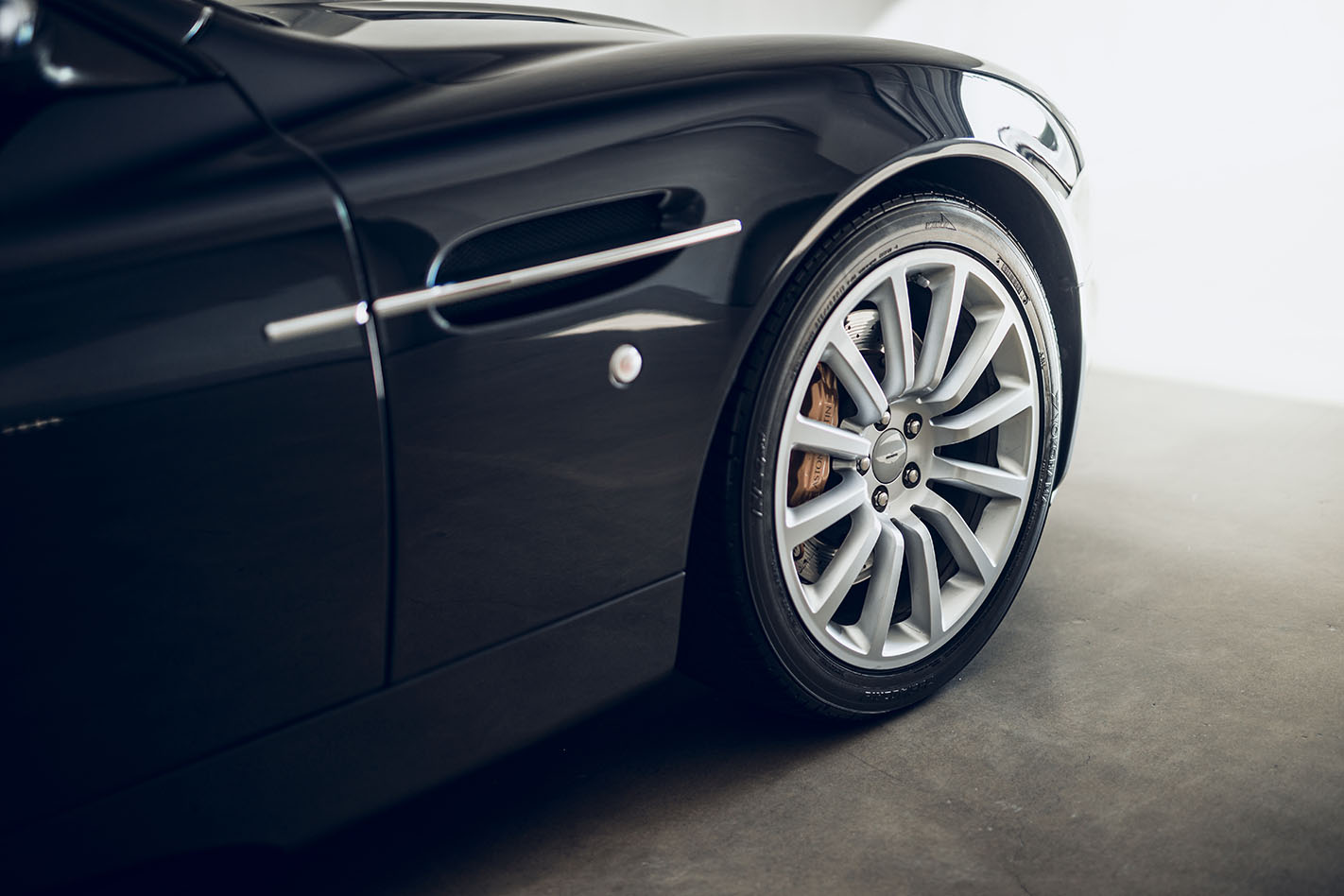
WHAT IS IT LIKE TO OWN?
“I first saw the Vanquish in a 2001 issue of MOTOR while riding home from school on the bus. From that moment I just fell in love with it, especially the shape. It was such a big jump ahead compared to the DB7. I didn’t want Bond-spec silver or grey, or one with a garish two-tone interior so I took my time and sourced this Antrim Blue with ivory trim Aussie car. The Vanquish has its foibles but it’s pretty much the best-sounding Aston Martin ever made. Ian Callum just nailed the shape. It’s telling that of all the cars in his back catalogue, this was the one he’s chosen to remanufacture.” – Jordan Roddy, Mt Eliza, VIC.
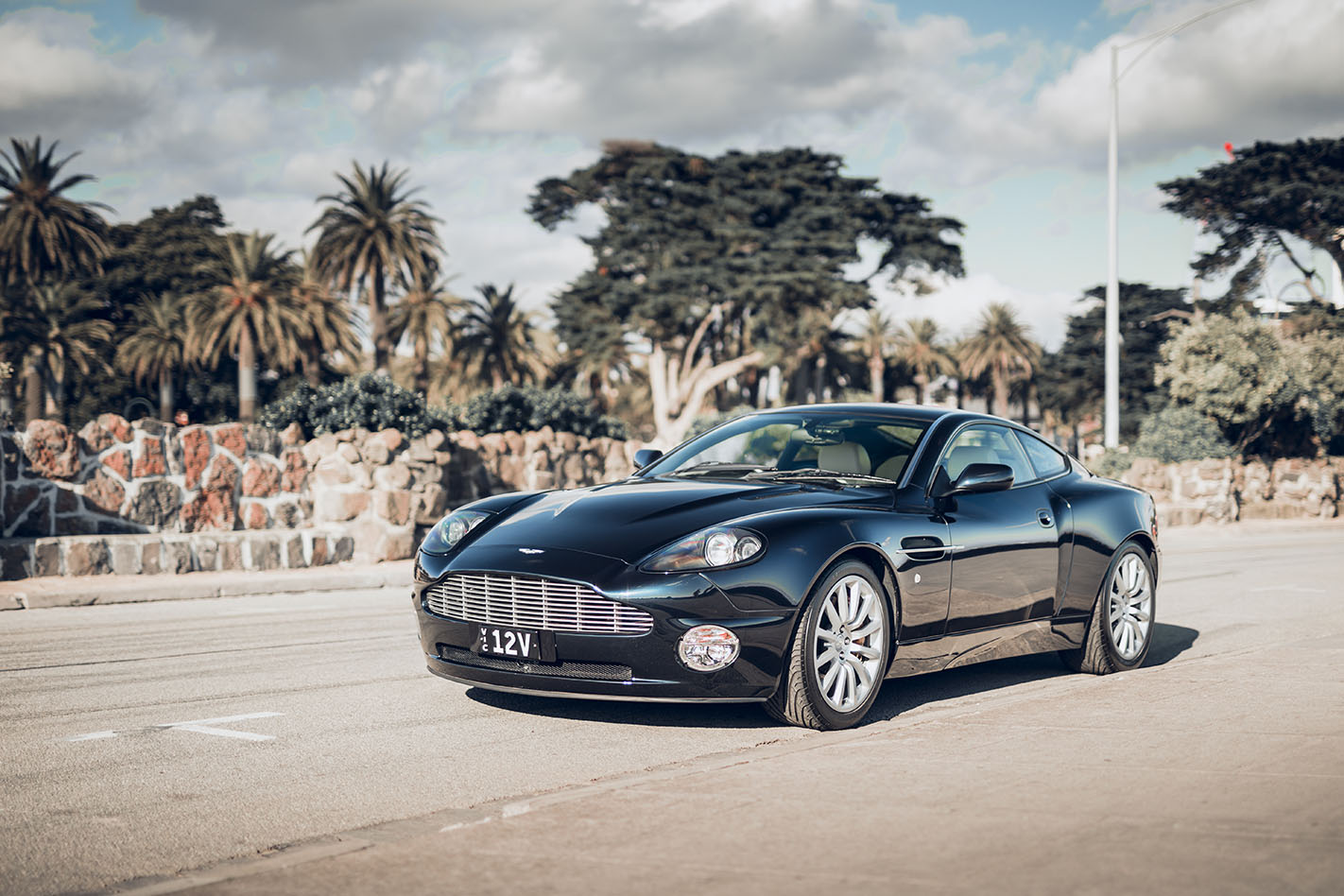
A LEGEND REBORN
Ian Callum wanted another crack at his favourite in partnership with the Swiss operators of Aston’s GT3 team, R-Reforged. For A$1m, 25 lucky customers got a thoroughly updated car, with 433kW, revised suspension, modern infotainment, 20” wheels, carbon brakes, an auto gearbox option and a stack of styling flourishes.
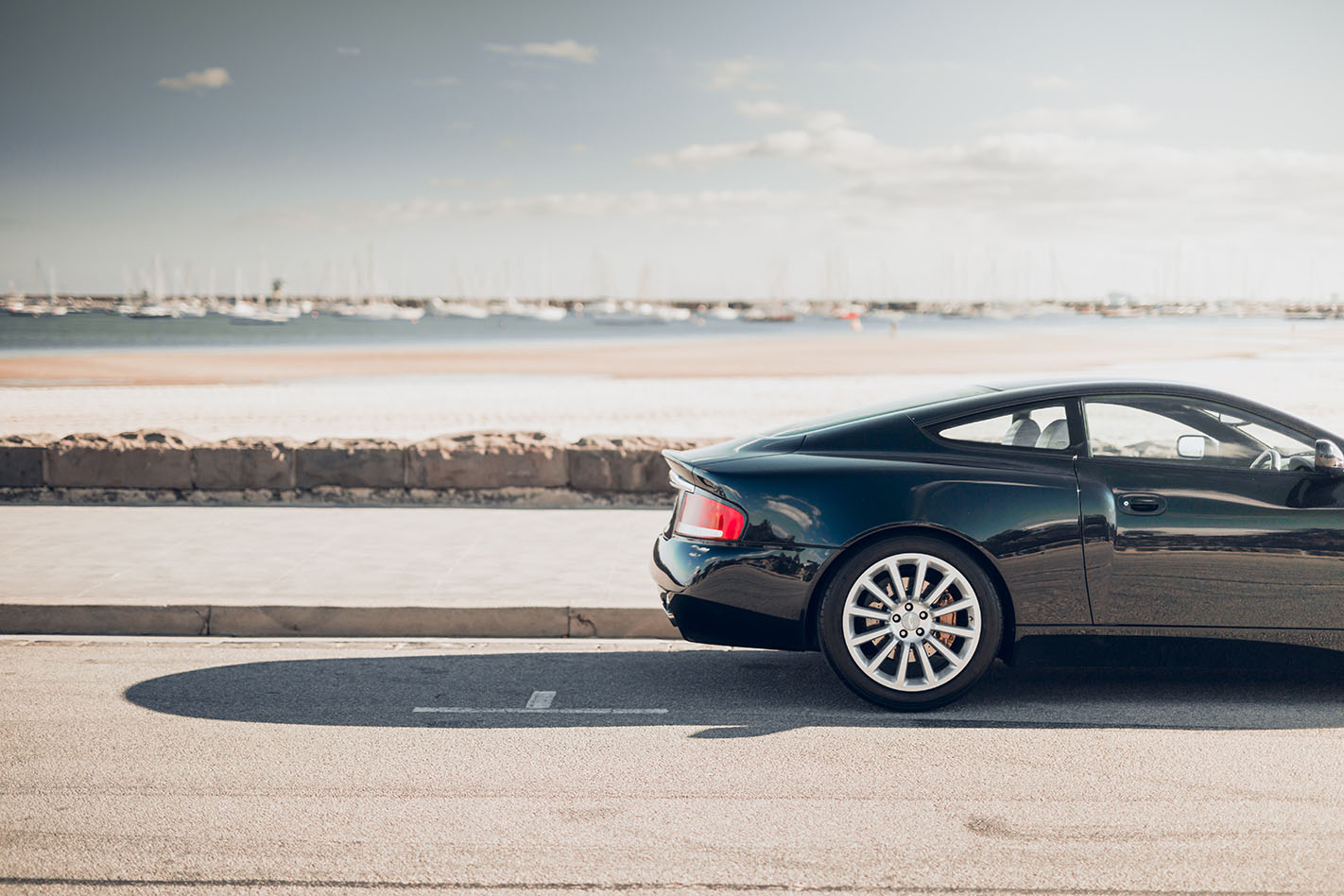
ASTON MARTIN V12 VANQUISH SPECS
- Engine: 5935cc V12 (60°), dohc, 48v
- Max power: 343kW @ 6500rpm
- Max torque: 542Nm @ 5000rpm
- Transmission: 6-speed robotised manual
- Weight: 1835kg
- 0-100km/h: 4.7sec (claimed)
- Economy: 15.0L/100km
- Price: $150,000 (value today)
The Bad: Not easy to keep on top of maintenance; transmission not to all tastes; dash now looks dated; steel subframes can rust; 2+2 cabin can feel tight for taller drivers
